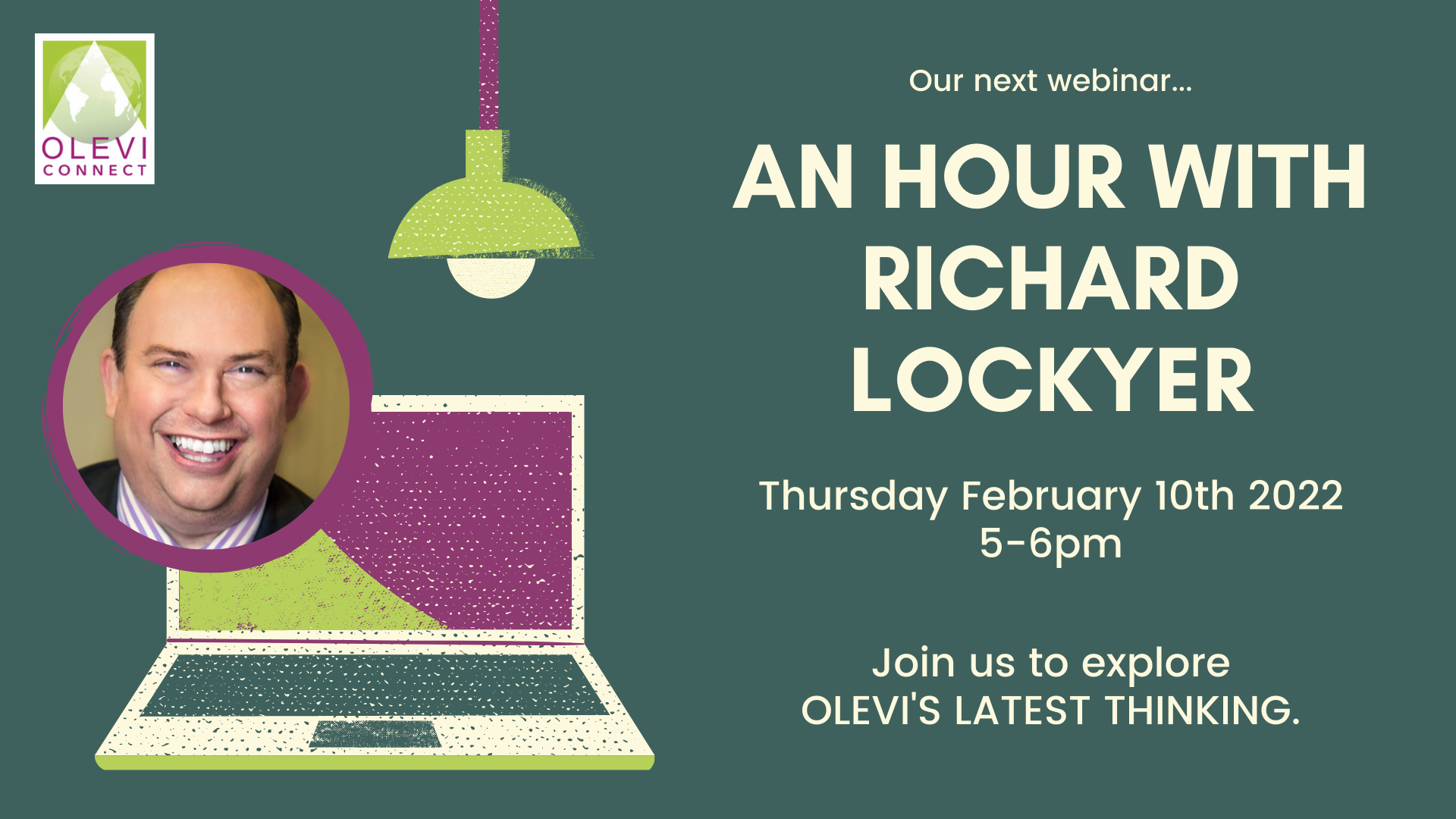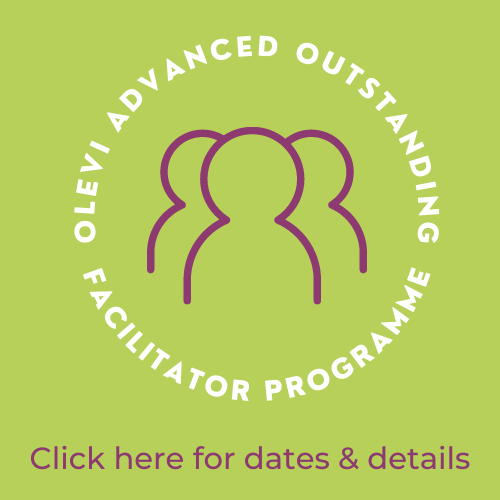Think Pieces
The OLEVI Facilitation Model – The Facilitator as a Credible Consultant.

Part One

The OLEVI Facilitation Model
The Importance of Facilitators in Schools.

Over the past 20 years, OLEVI facilitators have got on with the job of developing high performing professionals and pupils and driving culture change across schools and trusts.
Through our OLEVI Facilitation Pathway, they explore the theory and hone the skills needed to be effective leaders of learning – in a team, school, or trust level – empowering others to transform their practice, approach, and mind-set through incremental and sustainable improvement.
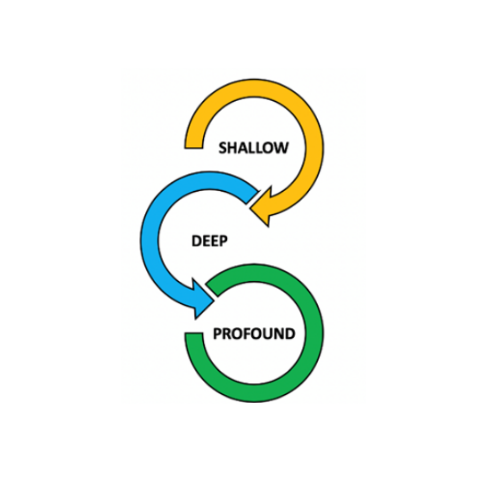
By expertly moving between the roles of Consultant, Collaborator and Coach, OLEVI facilitators create focused thinking environments, provide dynamic, varied learning experiences, and ultimately inspire a commitment to professional and organisational change amongst colleagues.
In this term’s think pieces, we will explore one process utilised by OLEVI facilitators to navigate these 3 crucial roles and ‘manage the learning and drive improvement’ – The OLEVI Facilitation Model.
Indeed, without a clear process to lead change, the facilitator’s theory and skills might not be implemented as consistently or effectively. However, without a skilled facilitator, this process might be implemented in shallow mode and thus not have profound impact. Great facilitators need all three elements – the theory, the skills, and the processes – so new practices are learnt and embedded by professionals and organisations. This model can be used by those facilitating:
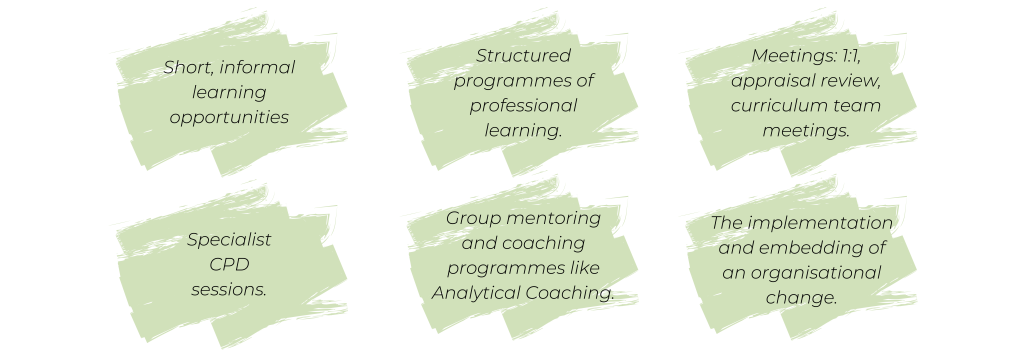
CONSULT (providing purpose, instruction and expertise). ‘The 10%’
How do you use expertise to empower others to think and grow?

OLEVI Facilitators must be seen to be credible consultants by those they work with. They must:
1.Generate a sense of expectation and purpose, ensuring everyone sees the value and importance of what they are doing.
2. Offer expert instruction of both the stimulus (e.g. a model, a piece of research, a tool such as an audit, etc.) as well as the activity itself, ensuring everyone is clear and confident with what is being discussed or shared.

These two roles as consultant, ensure high quality challenge and engagement in the collaborate phase (explained in the next Think Piece).
This is not easy, especially, when Facilitators have only 10% of the time to fulfill this role. They must be an expert, not so they can impart their in-depth thoughts and opinions to others, but instead so they can distill what is really important about the content and activity in a clear and concise manner. This is so over 90% of the time can be dedicated to empowered thinking by transformative change of the participants rather than passive listening to the ‘wisdom of’ the facilitator.
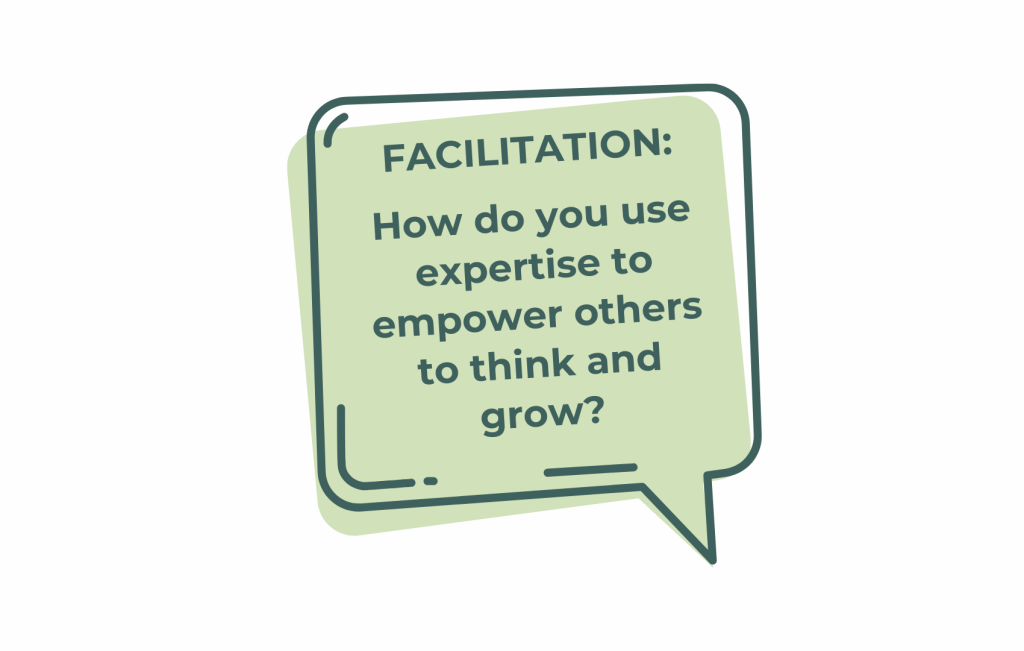
There are four key components to the role of Consultant – Setting Objectives, Articulating Content, Clarifying the Activity and Sharing Outcomes and Expectations.
These are explained in further detail below.

Facilitators must be fully aware of the purpose and importance of the learning activity or event. This is so they are fully aware of what they want to achieve at the end. It is important to decide how important it is to share the objectives with everyone else. Indeed, sometimes this is incredibly important and at other times it undermines the learning. For example, when:
- Introducing a new whole-school routine or practice to all members of staff, for example a new way of providing feedback to students, it might be incredibly important to share the context and rationale for sharing this at this event.
2. Engaging a group of professionals or pupils in some learning activities might mean the understanding of its purpose grows as the activity goes on. Indeed, sharing the intended outcomes of a task, might cause disengagement and stifle creativity. For example, during an OTP, delegates are asked to create a Teaching and Learning Model. The rationale for this is not shared by the facilitator, instead, the importance of this process (as well as the outcome) becomes obvious as the learning progresses.

High quality collaboration often required a stimulus. A facilitator must understand the content of the stimulus so well that they can can clearly and concisely explain and/or model its most important parts. This will avoid participants being disengaged and disempowered. They will have the time and space to ‘discover’ for themselves. Below are a few examples of stimuli you might use:
A conceptual model like DR ICE or QFF.
A set of images or words that are commonly used pedagogical terms.
An observation of best practice for example, a series of learning walks.
An audit of professional skills, using one or all of the following: Modelling, Delegation or Challenging Limiting Beliefs.
A piece of academic research, e.g. the EEFs Effective Professional Development.

Once the stimulus has been explained and/or modelled, the facilitator must be very clear and concise on what people are going to do in the collaboration time. It is important to remove as much ambiguity as possible so they are inspired, generating productive action! These activities might include:
Categorising key words or statements, for example dividing areas of a professional audit into areas of strength and areas for development.
Explaining how an image links to the topic for discussion, e.g. effective senior leadership.
Creating a relationship diagram, for example a Teaching and Learning Model.
Crafting 3 wisdom accessing questions after observing a colleague teach.
Applying a model or strategy, for example in the classroom or in a coaching session situation.
Sometimes an activity is layered, where new instructions are ‘dripped in’ during the collaboration stage (see ‘Stimulate’ section in next Think Piece for more detail).
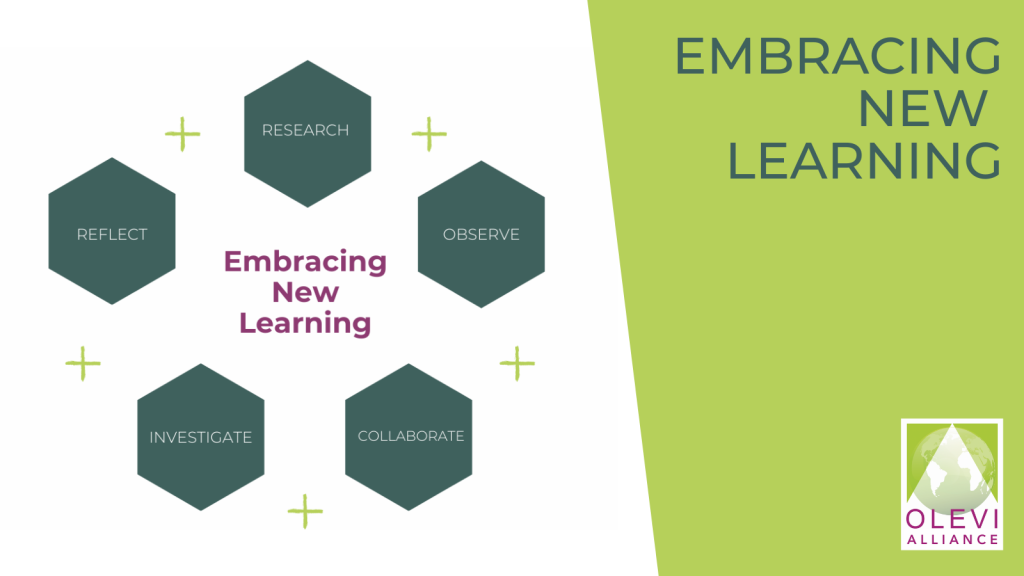
Consider how The OLEVI Embracing New Learning Model might help facilitators think of what activities they might set participants, to promote new thinking and learning! (see Think Piece 1 on Analytical Coaching for more details).

Before the collaborate phase starts, the intended outcome of this must be shared. Essentially, the facilitator will explain what they want participants to do by the end. This might be:
One member of the group will summarise the discussion in 3 distinct points.
The coaching pair will give 2 WWWs and 1 EBI regarding each other.
All three members of the group will contribute equally to a presentation or facilitated activity.
In the second part to this OLEVI Think Piece, released later this term, we will explore the COLLABORATE & COACH phases in detail.

UPCOMING OLEVI PROGRAMMES & EVENTS

